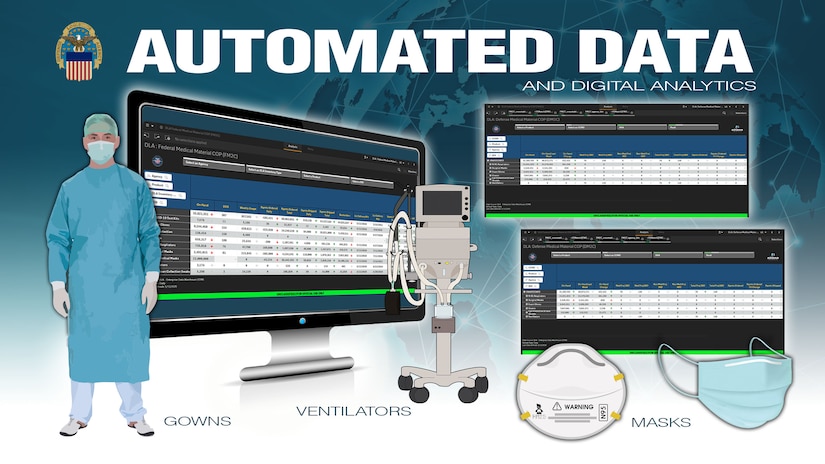May 21, 2020 | BY Beth Reece , Defense Logistics Agency
Automated supply-and-demand data on personal protective
equipment needed in the COVID-19 response is giving Defense Department
officials a unified picture of stock levels and requirements across DOD and
federal agencies, the Defense Logistics Agency's metrics integration chief
said.
"Open reporting on orders, shipments, back orders and
expected delivery dates lets leaders know whether there's enough material on
hand to meet requirements for the next 30 to 60 days," Sean Ahrens said,
adding that the data can drive informed decisions to adjust orders if
necessary.
DLA began sharing daily status reports on personal
protective equipment like masks and ventilators with DOD in April for inclusion
in Advana, a digital analytics platform the department developed last year to
track everything from finance to readiness.
The tool is now being used to track stocks of key medical
items owned by DLA, the military services and geographic combatant commands, as
well as federal agencies like the U.S. Department of Health and Human Services
and Federal Emergency Management Agency. The data needed to assess the
department's personal protective equipment posture would otherwise be
scattered, said Navy Capt. Diana Dalphonse, chief of the Strategic Initiative
Group's Strategy Branch for the Joint Chiefs of Staff Logistics Directorate.
"It gives leaders a quick snapshot of what we have and
what we need both in the United States and internationally," she said.
"If DOD as a whole appears short on a certain item, leaders can
collaborate with [the Department of Health and Human Services] and [the Federal
Emergency Management Agency] to get allotted additional supplies," she
said.
Test swabs are among the items DOD has received from federal
agencies because of the data, which has also shown areas where DLA and DOD have
ample supply despite shortages by federal agencies.
"For example, DOD has some availability of N95
respirators, and we were able to issue 20 million to HHS and FEMA to support
the national effort," Dalphonse added. "By seeing our entire posture
of medical supplies, we're able to view gaps and risks as we work to solve low
stock levels supporting national efforts."
DLA employees anticipated greater demand for medical
supplies in February and started compiling data on 17 items the agency provided
during the 2014 Ebola pandemic in Africa. Ahrens began sharing that data with
DOD in daily spreadsheets but said he expects it to be electronically fed into
Advana soon via DLA's Enterprise Data Warehouse, which presents real-time
metrics on key weapons systems and platforms along with the DLA Service
Readiness Dashboard.
Accurate data on ownership and location of the supplies
became critical as worldwide demand grew and multiple federal agencies relied
on the same vendors to produce millions of items, Ahrens added. Supporting
concurring requests from HHS and FEMA also complicated data management.
Advana users can customize views with different data sets,
which include breakouts by location, ownership and order and delivery status.
Details on pandemic and war reserve stocks owned by DHS are also available.
"With high demand for so much stuff nowadays, you
really need to have an accurate picture of everything available to make
informed decisions on whether to tap into reserve stocks," Ahrens said.
DLA employees have access to data on personal protective
equipment in the DLA Dashboard and can view the same details now in Advana.
That helps them understand the types of information being analyzed at the
secretary of defense and joint staff levels, Ahrens continued.
The agency is also working with DOD to duplicate the data
share in future disaster support efforts such as in hurricane response.







No comments:
Post a Comment